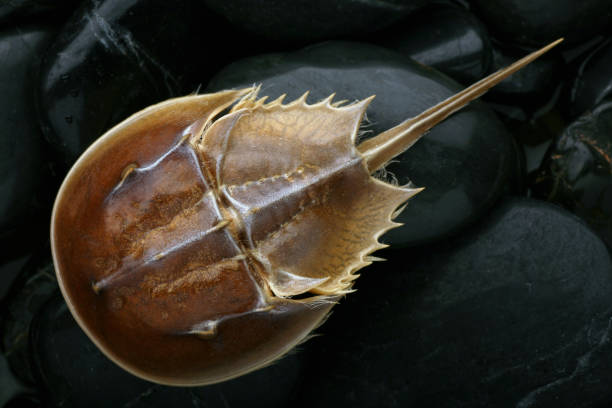The Surprising World of Hermit Crab Real Estate
Hermit crabs are nature's most discerning homebuyers, constantly on the lookout for the perfect shell to call home. These fascinating creatures engage in a complex and competitive housing market, complete with property viewings, negotiations, and even bidding wars. Join us as we explore the intriguing world of hermit crab real estate and uncover the remarkable behaviors that drive their quest for the ideal mobile home.

The Hermit Crab Housing Crisis
Hermit crabs face a unique challenge in the animal kingdom – they must find and inhabit discarded shells from other creatures to protect their soft, vulnerable abdomens. As hermit crabs grow, they need to continuously upgrade to larger shells, creating a constant demand for suitable housing. This need for shells has led to the evolution of complex behaviors and social interactions centered around acquiring and trading shells.
The scarcity of suitable shells in some environments has resulted in what researchers call a hermit crab housing crisis. In areas where human activities have reduced the availability of natural shells, hermit crabs may resort to using less-than-ideal alternatives, such as plastic bottle caps or other debris. This shortage not only affects individual crabs but can have ripple effects throughout coastal ecosystems.
Shell Selection Criteria
When it comes to choosing a shell, hermit crabs are surprisingly picky. They consider a variety of factors to ensure their new home meets their specific needs. Some of the key criteria include:
-
Size: The shell must be large enough to accommodate the crab’s body but not so large that it becomes cumbersome to carry.
-
Weight: A lighter shell allows for easier mobility, but it must still provide adequate protection.
-
Shape: The shape of the shell’s opening must match the crab’s body shape for a secure fit.
-
Durability: Stronger shells offer better protection against predators and environmental stressors.
-
Species-specific preferences: Different species of hermit crabs may prefer shells from particular mollusk species.
Researchers have found that hermit crabs can assess these qualities quickly, often making decisions about a shell’s suitability within minutes of encountering it.
The Shell Exchange Market
One of the most fascinating aspects of hermit crab behavior is the emergence of what scientists call shell exchange markets. These gatherings occur when multiple hermit crabs congregate around a newly available, high-quality shell. What follows is a complex series of interactions that resemble a real estate transaction.
The process typically begins with the crab currently occupying the most desirable shell. This crab will investigate the new shell and, if it’s an upgrade, will switch to the new home. This sets off a chain reaction, as the next largest crab moves into the recently vacated shell, and so on down the line. This behavior, known as a vacancy chain, ensures that multiple crabs can benefit from a single new shell entering the market.
Remarkably, hermit crabs have been observed forming queues based on size, patiently waiting their turn to inspect and potentially claim a new shell. This orderly process helps minimize conflict and ensures that shells are distributed efficiently among the population.
Competitive Strategies and Negotiations
While shell exchanges often proceed peacefully, competition can be fierce when desirable shells are scarce. Hermit crabs have developed a range of strategies to secure the best possible housing:
-
Shell rapping: Crabs may knock on occupied shells to assess their quality and attempt to evict the current resident.
-
Shell fighting: In some cases, crabs engage in physical contests, attempting to forcibly remove competitors from desirable shells.
-
Bluffing: Some crabs have been observed pretending to have found a high-quality shell, attracting others and potentially creating opportunities to upgrade during the ensuing excitement.
-
Group attacks: Multiple smaller crabs may work together to evict a larger crab from a desirable shell, then compete among themselves for the prize.
These competitive behaviors highlight the importance of suitable housing in hermit crab survival and reproductive success.
Implications for Conservation and Ecology
Understanding the intricacies of hermit crab shell selection and exchange behaviors has important implications for conservation efforts and ecosystem management. The availability of suitable shells can have far-reaching effects on hermit crab populations and the broader coastal ecosystems they inhabit.
Conservation initiatives focused on hermit crabs often involve efforts to increase the availability of suitable shells in areas where natural sources have been depleted. Some programs have experimented with introducing artificial shells designed specifically for hermit crabs, with mixed results.
The complex social behaviors observed in hermit crab shell exchanges also provide valuable insights into the evolution of cooperation and competition in animal societies. By studying these interactions, researchers can gain a better understanding of how social behaviors develop and function in nature.
The Future of Hermit Crab Housing
As our understanding of hermit crab behavior and ecology continues to grow, new questions and challenges emerge. Climate change and ocean acidification pose potential threats to the availability of suitable shells, as these factors can affect the populations of mollusks that produce the shells hermit crabs rely on.
Innovative approaches to addressing the hermit crab housing crisis are being explored, including the development of biodegradable artificial shells and efforts to restore natural shell-producing mollusk populations in affected areas. These initiatives not only benefit hermit crabs but also contribute to the overall health and biodiversity of coastal ecosystems.
The fascinating world of hermit crab real estate serves as a reminder of the complex and often surprising ways in which animals interact with their environment and each other. By continuing to study and protect these remarkable creatures and their habitats, we can gain valuable insights into the natural world and work towards preserving the delicate balance of our planet’s ecosystems.





